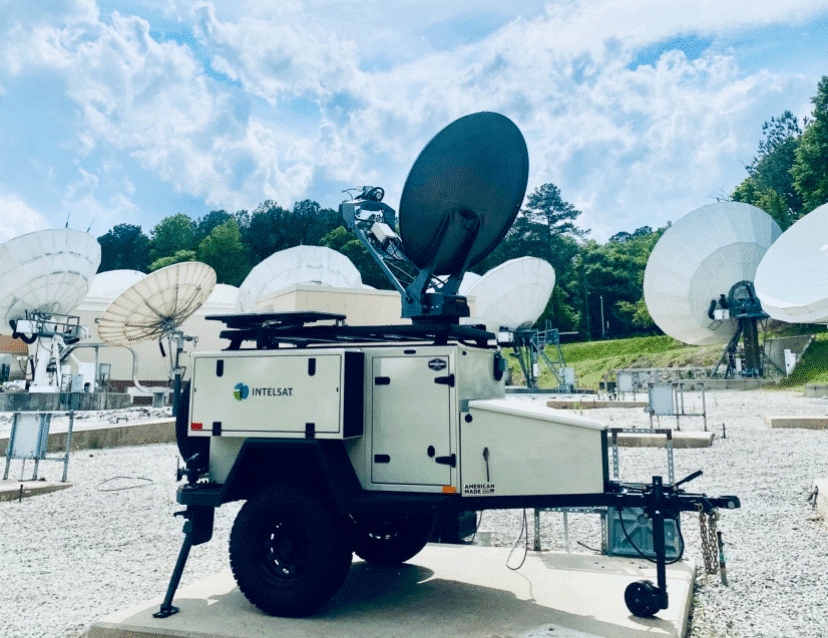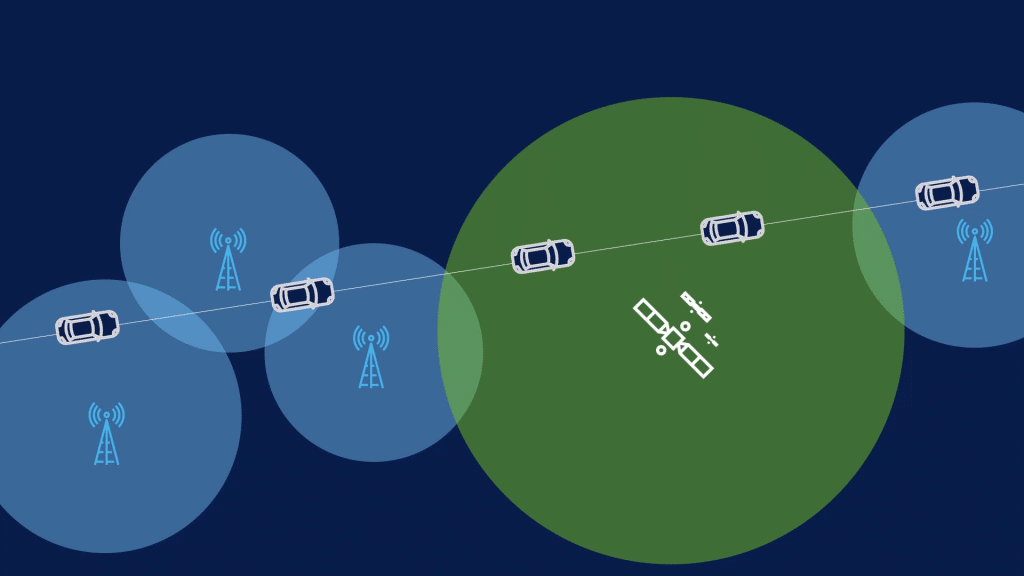Explaining Why You Might Care About Something Called “5G NTN in Ku Band”
Gerry Collins, Director, Product Management – Networks & Mobility
Intelsat recently announced a project to develop a network and devices combining cellular and satellite connectivity to deliver a seamless, global 5G experience. Once completed, the idea of being somewhere that doesn’t have some kind of broadband coverage will be a thing of the past. Underlying that work are the behind-the-scenes telecom standards discussions that may seem uninteresting at first – but are key drivers that are changing how the telecommunications industry will work into the future.
A vote for cooperation
In June 2024, at a technical industry event in Shanghai, the 3rd Generation Partnership Project (3GPP) Radio Access Network (RAN) plenary approved (led by Intelsat) the “Ku-band Work Package” for standardization.
The 3GPP RAN group focuses on the standards for how User Equipment (or “UE” – phones, connected cars, and other cellular devices) and the network work together, referred to as the Radio Access Network, or “RAN.” Since the approval of Release 17 of the 3GPP standards a few years ago, the RAN group has explored how to expand 5G standards to include handoffs between Terrestrial Networks (“TN,” traditional ground-based networks) and Non-Terrestrial Networks (“NTN,” flying or space-based technologies). In the Shanghai meeting, the RAN group decided that Release 19 would include a standard for using Ku-band satellite frequencies for 5G NTN.
The new standard is important because it opens the door for a single band of wireless spectrum, with multiple gigahertz of capacity, to be used across every cellular region, and virtually eliminating connectivity dead spots. This will enable concepts like large-scale smart agriculture operations, continuous source-to-consumer monitoring and control of renewable energy grids, and always-on broadband-connected cars. With a single user subscription taking advantage of a global blanket of standards-based broadband connectivity, it will help the industry move beyond currently offerings.
Looking beyond today’s direct-to-device
Recently, the relationship between the satellite industry and the cellular industry has made news with imminent offerings directly connecting satellite constellations to standard cellular phones. There are services being developed and deployed by satellite companies like SpaceX, AST SpaceMobile, and Lynk Global. These services will use existing cellular spectrum set aside by mobile network operators for the purpose of enabling the satellite connection. These plans create a whole new level of dialogue between two industries that have often behaved as though the other did not exist. The dream of eliminating dead spots for land networks now looks within grasp and is a welcome development.
However, this should be seen as a first step in what the collaboration between space and cellular can deliver. Connecting to unmodified cellular smartphones may seem to offer the ability to expand services for a lot of MNOs and users, but these services work using only whatever existing terrestrial spectrum can be set aside in whatever region is being serviced. For the most part, that spectrum is an extremely scarce resource. This means that a specific arrangement between a satellite company and MNO may only be useful for a particular geographic area, requiring numerous bilateral agreements to reach a global scale. Additionally – as seen with the current sat-to-unmodified-phone offerings – services are likely to be limited to voice and text services for most subscribers.
In addition to services using MNO spectrum, some smartphone manufactures have created “SOS” services that use later-model phone hardware to send messages using satellite-based spectrum. Apple iPhones using Globalstar and Google phones using Skylo are two examples of this type of service. These services are limited to low throughputs because of the specific spectrum being used, making them good for emergency connections but not for broadband connections.
Enter Ku band
Which brings us back to the 3GPP vote in June. The designation of Ku band as a frequency for 5G NTN (5G via satellite) changes the situation significantly. Firstly, the Ku-band spectrum (operating roughly between 10GHz and 14GHz) is already used today by telecommunication satellite networks to provide all types of services. It’s used to support broadband use cases around the world, from internet access to regional cellular connectivity to consistent connectivity for planes, ships, and ground vehicles.
Secondly, the Ku band is defined globally – the same spectrum is defined across all regions – which means that devices operating in Ku band can rely on consistent access to the same spectrum anywhere in the world. In addition to the benefit of global coverage, Ku operates across more than 3GHz of spectrum meaning that broadband throughput and applications are easily supported and services are not limited to text and voice.
A side note about another piece of “K” spectrum: Ka band. Although this 2 GHz of spectrum was previously identified as a 5G NTN frequency band in Release 18 of the 3GPP standard, the existing ecosystem and scale of the Ku-band industry introduces a larger infrastructure to be leveraged for satellite-to-cellular interoperability. Indeed, a future can be envisaged whereby 5G can be deployed using the combined 5GHz of Ku and Ka bands together.
Getting costs down through standards-based interoperability
It is possible today to, for example, enable a vehicle to be continuously connected through both cellular and Ku-band satellite networks – but you need both a device with a cellular antenna and separate Ku-band antenna and mode devices. Those separate antennas and modems add weight, take up more space, and add costs. This is where interoperability through common standards comes into play.
By establishing the standards through which cellular terrestrial networks can use the global Ku-band non-terrestrial network, the telecoms industry as a whole can design next-generation devices that add satellite access while leveraging the volume-driven lower costs of cellular devices. The availability of lower-priced, interoperable cellular and satellite connectivity will create the potential for new use cases and apps.
The future global broadband network
Aligning on standards to address the challenge of interoperable cellular networks and NTNs paves the way for the practical work of implementing hybrid devices and commercial services. We’re inviting all players in the wireless-connectivity marketplace to join us in moving forward with the work begun with 3GPP. Building on these standards, our work will help deliver a future where geography is no longer a barrier to quality modern connectivity.






















